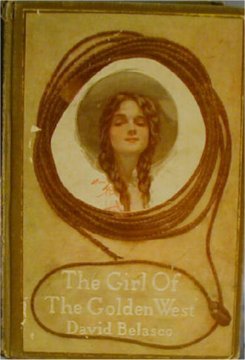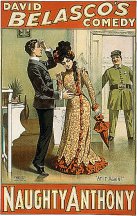 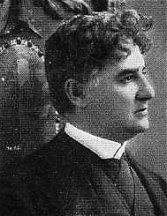 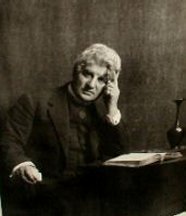 David Belasco 1853-1931, manager/dramatist
David Belasco 1853-1931, manager/dramatist
NY, 1923, "A Souvenir of 'The Merchant of Venice' as produced by
David Belasco". Privately Printed by David Belasco, New York, 1923.
There is a frontispiece photograph of David Belasco by Arnold Genthe. This
Souvenir Booklet is profusely illustrated with photos of the cast in various
scenes. At the end, the author adds numerous critical revues and testimonials
of newspapers and critics. He was portrayed in the 1940 film, The Lady
with Red Hair.
Biography
David Belasco (right) was probably as comprehensive a theatre practitioner
as could be – actor, stage manager, pioneer of stage lighting, director,
playwright, manager – Belasco did them all. He also discovered Mary Pickford.
From 1900-1930, Belasco produced over 80 shows on Broadway.
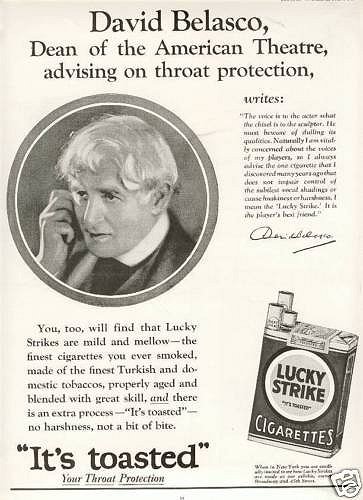 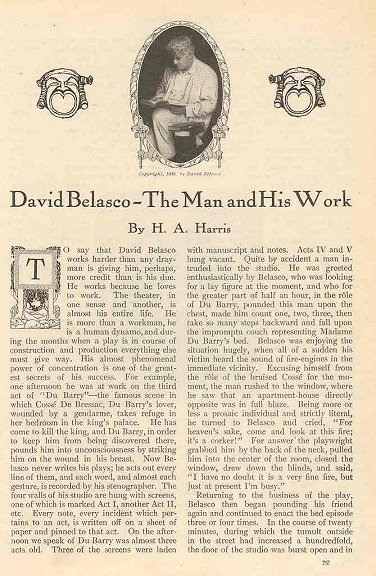
When
Mary Pickford Came to Me
THE STORY OF THE MAN WHO
FIRST WROTE HER NAME IN LIGHT ON BROADWAY
By David Belasco
EDITOR’S NOTE: PHOTOPLAY
MAGAZINE is indebted to the most famous individual theatrical manager in
the world for this simple, intimate account of Miss Pickford’s stellar
beginnings in New York. The story appears exactly as Mr. Belasco dictated
it. It is one of the few narratives of contemporary theatrical affairs
which he has thought worthy of his personal narration.
FOR a long time I had been
receiving a number of letters from a little girl who signed herself Mary
Pickford. She said she wanted to get into a bigger dramatic company and
play in New York. In one of her letter she told me she had vowed never
to appear in New York except under my management. With each of her letters
she enclosed a photograph, and they proved particularly interesting, as
in nearly every picture there was such variety of facial expression. When
I was casting “The Warrens of Virginia,” by William C. De Mille, I found
the child’s part, that of Betty Warren, to be an unusually good one. It
needed a little girl with a strong sense of the dramatic and emotional,
as well as a little comedienne. My first meeting with Mary Pickford was
on the eve of going into rehearsal. The cast was all made up, even to the
party of Betty — but I was not altogether satisfied with the girl I had
for that role. At the time, Miss Frances Starr was playing “The Rose of
the Rancho,” in the old Belasco Theatre, now re-named The Republic. It
was a Thursday matinee, and the stage door man came and told me that a
child wished to see me. I told him to tell her I couldn’t see anyone. She
insisted, so much so, that the man returned with the message that she had
come a long distance to see me and had to leave town at noon the next day
to resume her tour in some small play. She simply must see me before leaving
New York! Because of her persistency, and, remembering upon hearing her
name, the many letters and photographs she had sent to me, I consented
to receive her. Miss Pickford came into my little room off the stage, as
sweet and pretty a picture as I had ever seen. She wore short dresses,
with her hair down her back, and altogether she looked very charming. “Mr.
Belasco, I recognize you by your pictures,” were her first words. “I’m
Mary Pickford. Our company is playing near New York just now, and I’ve
come to see you. I want to go under your management.” As she had said this,
she looked straight at me, her big, beautiful eyes looking straight into
mine. Not for a moment did her glance waver.
I saw at once that she was
just my ideal for the part of Betty Warren. The more I listened to her
the more I realized she was the child I wanted for this role. I asked little
Mary her ambitions and she said she wanted to be an emotional actress.
She showed me a number of letters making her offers to appear in plays,
but she had refused them all. She told me that it had been her dream always
to one day play for me. “I’ve come a long way to see you, Mr. Belasco;
please don’t disappoint me. And you will give me a part — you must.” Then
her voice choked a bit, but she bravely continued: “You might as well say
you want me now, because I won’t leave New York until you do. Our company
is going on a long tour beginning tomorrow, but I am not going with it.
I have made up my mind that now is the time for me to realize my dream.”
I smiled, and she said:
“Am I engaged?”
I answered, “You are.”
“Oh, is this Frances Starr?”
ejaculated my little visitor, jumping up from where she had been sitting.
“I have heard so much about you. Aren’t you happy to be playing with Mr.
Belasco?”
“Yes,” said Miss Starr,
smiling upon the eager child.
“I’m happy, too,” said Miss
Pickford, with a shake of the head and with much enthusiasm. “I am going
to play for Mr. Belasco — isn’t it wonderful!” And Miss Pickford, on whose
shoulders there rested even then an unusually strong business head, turned
and said to me:
“I’m getting a splendid
salary, and you may not want to pay me as much, for I realize that the
part you have for me is a small one. But don’t tell me how much; I’ll take
whatever you will give me.”
With this, Miss Starr remarked:
“I said the same thing to Mr. Belasco when he engaged me, and my first
envelope contained much more than I would have asked him.”
And as Miss Starr went to
her dressing room to change for the next act, little Mary Pickford threw
her arms around me and with tears in her eyes thanked me for engaging her.
She went away a living embodiment of enthusiasm and joy. Rehearsing Mary
Pickford was a great pleasure. She was a hard worker, the first at rehearsals
and the last to go. She would go over and over her little scenes many times.
She would read and re-read her lines to find out which was the best way
to speak them. When she asked me about them I said to her: “Which do you
feel the best?” Then she would tell me, and I would say, “That is the best
way.” She always took suggestions quickly, and acted upon them at once.
She was very creative and a highly imaginative little body. She would say:
“Oh, Mr. David, I thought
of something for my part. Will you look at it and let me know what you
think about it?” Invariably, she was right, and I always let her do as
she suggested. As I noted the little things she did with the part I understood
why she made such a success. Her postures were graceful, and it was remarkable
how she would visualize a story. Often I would tell he one, and even as
I told it she would illustrate it with her ever-changing expressions and
delicately subtle movements of body.
Always quiet, she was loved
by everyone. Of a retiring nature, she was never in the way of anyone about
the theatre, and she helped all who came in contact with her. In addition
to being a little student she was unusually inspirational. Therein lies
her great success.
On the first night of “The
Warrens of Virginia,” little Mary was the most composed of the entire company.
This same composure has been one of her greatest assets on the screen.
Her features do not become strained. She is all repose — easy and graceful
at all times.
Miss Pickford remained with
me in “The Warrens of Virginia” for nearly three seasons. She made herself
famous in that one part, which was a great personal success for her and
contributed very much to the play. This was at the time of the beginning
of motion pictures, and Mary Pickford’s remarkable face and personality
were noticed by the pioneers in that field. So it was only natural that
at the end of the tour of our play she should have gone into picture work.
From the first she gave promise of the ability that has since made her
the greatest motion picture artiste in the world.
Before she left me, Miss
Pickford said: “Mr. Belasco, remember, no matter where I am or what I am
doing, when you want me just let me know, and I’ll come.” I did not she
her again for a number of years, but I watched her grow in popularity.
Then came the time when I wanted to produce a child’s play: “A Good Little
Devil,” the delightful fairy drama by Rosemonde Gerard and her son, Maurice
Rostand. By this time Mary Pickford was famous, and had become known throughout
the land as “The Queen of the Movies,” and was the highest salaried artiste
posing for the motion picture camera. No sooner had I read the manuscript
for “A Good Little Devil” than I thought of her for the part of the little
blind girl, Juliette. I sent for her. She came to me that very day, and
I said:
“Mary, I have a beautiful
part, one that is just suited to you. You will make a great success in
it, and it will help in your artistic development.”
“You say the part is very
beautiful,” she said. “You know, I promised I would come whenever you wanted
me. If you want me now I’ll keep my word.”
“I not only want you — I
need you,” was my reply.
Tears came and she asked:
“Do you really need me?”
“I certainly do.”
“Then I’ll come back to
you.”
And this wonderful little
girl, who holds such a unique position in the annals of our theatre, came
back to us all, and played the little blind girl in “A Good Little Devil.”
During the first rehearsal,
she came to me and said, “Oh, Mr. David, I’m dressing in the same room
that Miss Starr used when I first came to you for an engagement. Isn’t
it wonderful? In ‘The Warrens’ I dressed way upstairs. Now I am in this
other room!” She made a great artistic success in the part, and her motion
picture following swarmed around the doors of the theatres to see her after
every performance, particularly at matinees. This kept up for months during
the long New York run, and was even more enthusiastic when the company
was on tour. In all the places that the play went the motion picture people
had camera men waiting and took special pictures of “Little Mary” going
to and from the theatre, and leaving the theatre after a performance. Her
pictures were shown before and after the arrival of the play, and also
while it was running.
Miss Pickford’s success
in the difficult role of the little blind girl was phenomenal. Nothing
like her remarkable performance of a child’s part ever had been seen in
New York or elsewhere, and for a player to jump into such instantaneous
popularity was almost unheard of.
During the summer, after
the long run of “A Good Little Devil,” Miss Pickford was taken seriously
ill, and it became necessary for her to undergo a dangerous operation.
For many nights she lingered between life and death.
It was after one of my long
rehearsal of “The Concert” when Mary’s mother came to me in the Belasco
Theatre, and said:
“Oh, Mr. Belasco, Mary’s
just out of the hospital this morning and insisted upon coming straight
over here to see you. We have been out in front all day long, but she wouldn’t
allow me to interrupt you.”
I rushed into the dark auditorium
to see Mary and found her propped up in a chair, looking just a shadow
of her pretty self.
“Why, Mary dear, have you
been here all this time? Why didn’t you speak up and let me know?”
“I didn’t want to interrupt
you during rehearsal,” she said, in a rather feeble voice, her wonderfully
large eyes looking straight at me out of the darkness of the place.
It was near the time for
the beginning of the second-year of “A Good Little Devil,” about two months
before the opening. I realized at once that it would be impossible for
her to travel, and I told her that I would not allow her to risk her life,
tour or no tour of the play.
She said, “Mother was going
to take me out to Los Angeles to regain my health, but I may be able to
come back in time.”
I said, “I do not think
you should risk it.”
“Let’s not decide today,”
said Mary.
In a few days the Famous
Players Film Company made her an offer to take some motion pictures of
her while she was out on the Pacific Coast. I told Mary that this would
be fine; not only would the picture work keep her occupied, but being out-of-doors
it would not be hard on her or too taxing on her strength, and that she
would not be losing time and would be receiving splendid remuneration for
her services.
Several days after that,
little Mary called to see me, and said:
“I want to tell you, Mr.
David, that everything has come out just as you said it would. Playing
the little blind girl has helped me more than I can tell you. All of the
motion picture managers want me, and I am to state my own terms.”
“I do not think you will
be strong enough to go on a long tour,” I told her. “And as I’m sure you
are going to be the most famous motion picture player in the world, I do
not think that ‘A Good Little Devil’ should stand in your way. I release
you. Some time in the future if you should tire of the pictures, and want
to come back to the legitimate stage, I will always have a place for you.”
And so we parted.
When Mary Pickford came
to me her salary was $35.00 per week. In her present line of work she has
a guaranteed salary of more than $100,000 a year, with all of her expenses
paid, and automobiles and everything that she may want at her command and
at no expense to her.
I remember once Mary asked
David W. Griffith, who was her first motion picture director, if she could
do a picture with me. And one of the things that I value very highly is
a reel, the only one which I possess, and which I have in my studio and
treasure greatly. We did the picture, along with Mr. Griffith and the late
William J. Dean, who was my general stage director at the time.
Whenever Mary Pickford made
a new picture I was always invited to come and look at it before it was
released to the public. I still receive these invitations and frequently
we see each other and exchange greetings. No one takes more pride and pleasure
in her success than I. No one knows better than I that it is due, not to
mere circumstances, but to the artistry and charm by means of which Mary
Pickford has become known in every city, town and hamlet in the land and
beloved by all our people.
This article originally
appeared in Photoplay Magazine, December 1915, Volume IX, Number 1, pages
27-34.
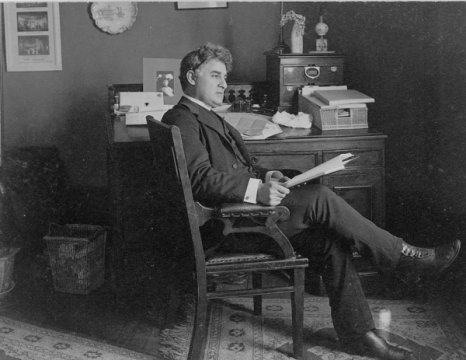
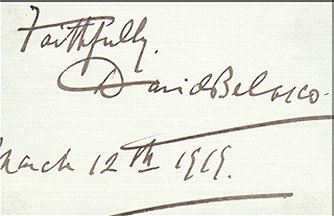
|

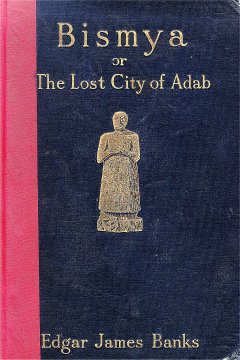
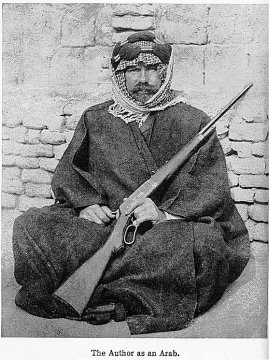
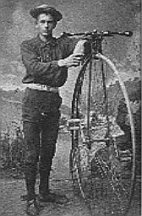
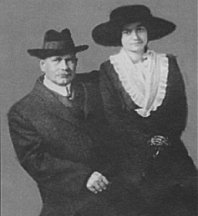
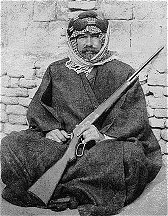
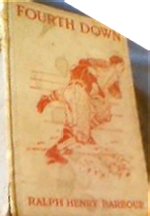
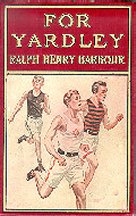
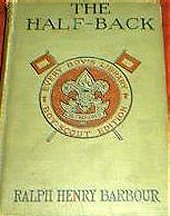 The Half-Back
~ 1899 ~ G&D ~ 267 pages
The Half-Back
~ 1899 ~ G&D ~ 267 pages
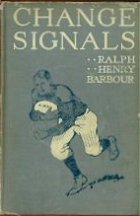
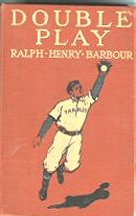
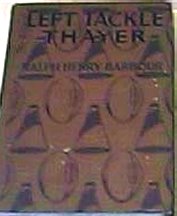
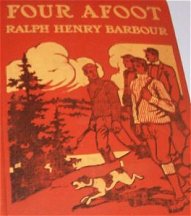
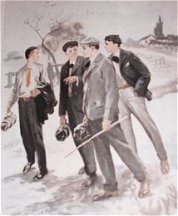
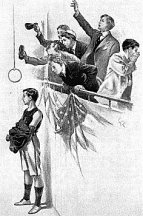
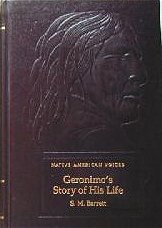
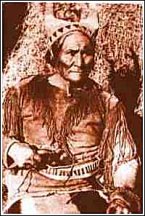
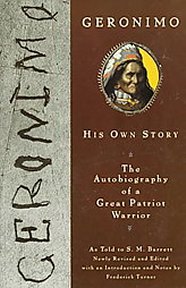 Geronimo,
a Bedonkohe Apache leader of the Chiricahua Apache, led his people's defense
of their homeland against the U.S. military after the death of Cochise.
In the early 1870s, Lieutenant Colonel George F. Crook, commander of the
Department of Arizona, had succeeded in establishing relative peace in
the territory. The management of his successors, however, was disastrous.
In 1874, some 4,000 Apaches were forcibly moved by U.S. authorities to
a reservation at San Carlos, a barren wasteland in east-central Arizona.
Deprived of traditional tribal rights, short on rations and homesick, they
revolted. Spurred by Geronimo, hundreds of Apaches left the reservation
to resume their war against the whites. In 1882, Crook was recalled to
Arizona to conduct a campaign against the Apaches. Geronimo surrendered
in January 1884, but took flight from the San Carlos reservation in May
1885, accompanied by 35 men, 8 boys and 101 women. Crook, along with scouts
Al Sieber, Tom Horn and Mickey Free (the white child Cochise was falsely
accused of abducting) set out in pursuit, and 10 months later, on March
27, 1886, Geronimo surrendered at Cañon de Los Embudos in Sonora,
Mexico. Near the border, however, fearing that they would be murdered once
they crossed into U.S. territory, Geronimo and a small band bolted. As
a result, Brigadier General Nelson A. Miles replaced Crook as commander
on April 2. During this final campaign, at least 5,000 white soldiers and
500 Indian auxiliaries were employed at various times in the capture of
Geronimo's small band. Five months and 1,645 miles later, Geronimo was
tracked to his camp in Mexico's Sonora mountains. At a conference on Sept.
3, 1886, at Skeleton Canyon in Arizona, Miles induced Geronimo to surrender
once again, promising him that, after an indefinite exile in Florida, he
and his followers would be permitted to return to Arizona. The promise
was never kept. Geronimo and his fellow prisoners were put to hard labor,
and it was May 1887 before he saw his family. Moved to Fort Sill in the
Oklahoma Territory in 1894, he at first attempted to "take the white man's
road." He farmed and joined the Dutch Reformed Church, which expelled him
because of his inability to resist gambling. He never saw Arizona again,
but by special permission of the War Department, he was allowed to sell
photographs of himself and his handiwork at expositions. Before he died
at Fort Sill, Oklahoma, Feb. 17, 1909, he dictated to S.S. Barrett his
autobiography, "Geronimo: His Own Story."
Geronimo,
a Bedonkohe Apache leader of the Chiricahua Apache, led his people's defense
of their homeland against the U.S. military after the death of Cochise.
In the early 1870s, Lieutenant Colonel George F. Crook, commander of the
Department of Arizona, had succeeded in establishing relative peace in
the territory. The management of his successors, however, was disastrous.
In 1874, some 4,000 Apaches were forcibly moved by U.S. authorities to
a reservation at San Carlos, a barren wasteland in east-central Arizona.
Deprived of traditional tribal rights, short on rations and homesick, they
revolted. Spurred by Geronimo, hundreds of Apaches left the reservation
to resume their war against the whites. In 1882, Crook was recalled to
Arizona to conduct a campaign against the Apaches. Geronimo surrendered
in January 1884, but took flight from the San Carlos reservation in May
1885, accompanied by 35 men, 8 boys and 101 women. Crook, along with scouts
Al Sieber, Tom Horn and Mickey Free (the white child Cochise was falsely
accused of abducting) set out in pursuit, and 10 months later, on March
27, 1886, Geronimo surrendered at Cañon de Los Embudos in Sonora,
Mexico. Near the border, however, fearing that they would be murdered once
they crossed into U.S. territory, Geronimo and a small band bolted. As
a result, Brigadier General Nelson A. Miles replaced Crook as commander
on April 2. During this final campaign, at least 5,000 white soldiers and
500 Indian auxiliaries were employed at various times in the capture of
Geronimo's small band. Five months and 1,645 miles later, Geronimo was
tracked to his camp in Mexico's Sonora mountains. At a conference on Sept.
3, 1886, at Skeleton Canyon in Arizona, Miles induced Geronimo to surrender
once again, promising him that, after an indefinite exile in Florida, he
and his followers would be permitted to return to Arizona. The promise
was never kept. Geronimo and his fellow prisoners were put to hard labor,
and it was May 1887 before he saw his family. Moved to Fort Sill in the
Oklahoma Territory in 1894, he at first attempted to "take the white man's
road." He farmed and joined the Dutch Reformed Church, which expelled him
because of his inability to resist gambling. He never saw Arizona again,
but by special permission of the War Department, he was allowed to sell
photographs of himself and his handiwork at expositions. Before he died
at Fort Sill, Oklahoma, Feb. 17, 1909, he dictated to S.S. Barrett his
autobiography, "Geronimo: His Own Story."
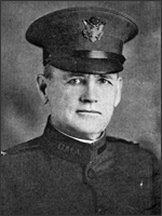 S.M. Barrett:
During 1905 and 1906, Geronimo, the legendary Apache warrior and honorary
war chief, dictated his story through a native interpreter to S.M. Barrett,
then superintendent of schools in Lawton, Oklahoma. As Geronimo was by
then a prisoner of war, Barrett had made appeals all the way up the chain
of command to President Teddy Roosevelt for permission to record the words
of the "Indian outlaw." Geronimo came to each interview knowing exactly
what he wanted to cover, beginning with the telling of the Apache creation
story. When, at the end of the first session, Barrett posed a question,
the only answer he received was a pronouncement-"Write what I have spoken."
S.M. Barrett:
During 1905 and 1906, Geronimo, the legendary Apache warrior and honorary
war chief, dictated his story through a native interpreter to S.M. Barrett,
then superintendent of schools in Lawton, Oklahoma. As Geronimo was by
then a prisoner of war, Barrett had made appeals all the way up the chain
of command to President Teddy Roosevelt for permission to record the words
of the "Indian outlaw." Geronimo came to each interview knowing exactly
what he wanted to cover, beginning with the telling of the Apache creation
story. When, at the end of the first session, Barrett posed a question,
the only answer he received was a pronouncement-"Write what I have spoken." 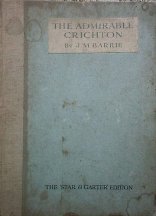
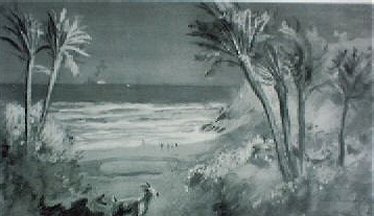
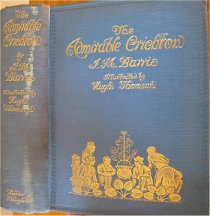
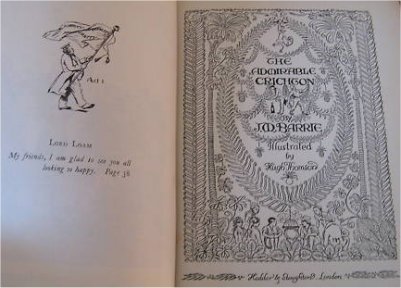
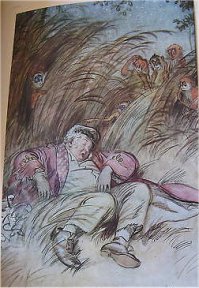
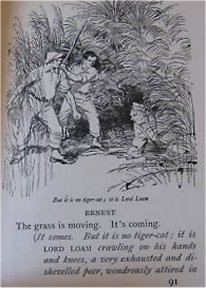
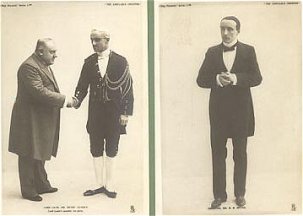
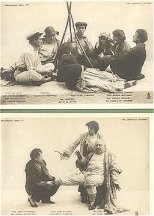
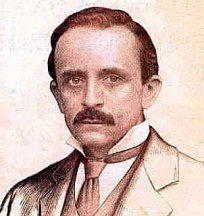
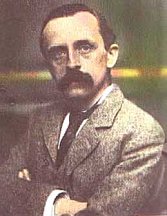 James
Matthew Barrie was born in Kirriemuir (Forfarshire), the "Thrums" of
his fiction, on 9th May 1860, the seventh surviving child of a hand-loom
weaver. Educated at Glasgow Academy, Forfar Academy and Dumfries Academy,
he took his MA at Edinburgh University. He worked as a journalist for the
Nottingham Journal before moving to London in 1885 to freelance. Success
came with a series of sketches of life in bygone Thrums contributed to
the St. James's Gazette, published in 1888 as Auld licht idylls, followed
by When a man's single (1888) and A Window in Thrums (1889). These works
and the novels The Little minister (1891), Sentimental Tommy (1896) and
its sequel Tommy and Grizel (1900) have been regarded by George Blake and
others as examples of the Kailyard School. Leonee Ormond's J.M. Barrie
(1987) argues that it is more rewarding to assess Barrie's regional fiction
beside that of Hardy and George Eliot. Barrie's dramatised adaptation of
The Little minister was enormously successful, persuading him to write
increasingly for the stage. Notable among his early plays are Quality Street
(1902), The Admirable Crichton (1902) and What every woman knows (1908).
In 1894 he married the actress Mary Ansell. The marriage was childless
and ended in divorce in 1909. However, he had befriended and was ultimately
to adopt the five boys of Arthur and Sylvia Llewelyn Davies, a relationship
brilliantly explored in Andrew Birkin's book, J.M. Barrie and the Lost
Boys (1979). Out of stories he spun for the Davies boys came the material
for Peter Pan (1904), probably the most famous children's play ever written.
It is a complex work, perceptive and unsentimental about childhood. Peter,
"the boy who would not grow up", the conceited leader of the Lost Boys
of Never Land, forever dodges the world of adulthood. Like Sherlock Holmes
he seems destined for greater immortality than his creator.
James
Matthew Barrie was born in Kirriemuir (Forfarshire), the "Thrums" of
his fiction, on 9th May 1860, the seventh surviving child of a hand-loom
weaver. Educated at Glasgow Academy, Forfar Academy and Dumfries Academy,
he took his MA at Edinburgh University. He worked as a journalist for the
Nottingham Journal before moving to London in 1885 to freelance. Success
came with a series of sketches of life in bygone Thrums contributed to
the St. James's Gazette, published in 1888 as Auld licht idylls, followed
by When a man's single (1888) and A Window in Thrums (1889). These works
and the novels The Little minister (1891), Sentimental Tommy (1896) and
its sequel Tommy and Grizel (1900) have been regarded by George Blake and
others as examples of the Kailyard School. Leonee Ormond's J.M. Barrie
(1987) argues that it is more rewarding to assess Barrie's regional fiction
beside that of Hardy and George Eliot. Barrie's dramatised adaptation of
The Little minister was enormously successful, persuading him to write
increasingly for the stage. Notable among his early plays are Quality Street
(1902), The Admirable Crichton (1902) and What every woman knows (1908).
In 1894 he married the actress Mary Ansell. The marriage was childless
and ended in divorce in 1909. However, he had befriended and was ultimately
to adopt the five boys of Arthur and Sylvia Llewelyn Davies, a relationship
brilliantly explored in Andrew Birkin's book, J.M. Barrie and the Lost
Boys (1979). Out of stories he spun for the Davies boys came the material
for Peter Pan (1904), probably the most famous children's play ever written.
It is a complex work, perceptive and unsentimental about childhood. Peter,
"the boy who would not grow up", the conceited leader of the Lost Boys
of Never Land, forever dodges the world of adulthood. Like Sherlock Holmes
he seems destined for greater immortality than his creator.
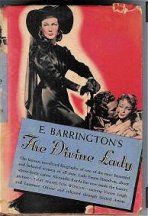
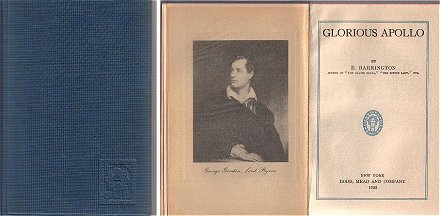
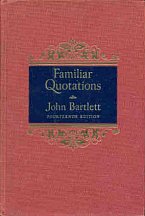
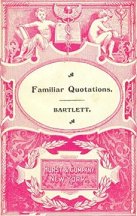
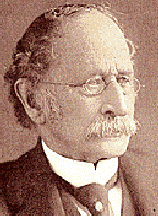 John Bartlett
John Bartlett
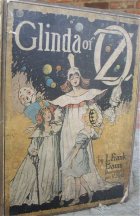 This Book
is Dedicated to My Son Robert Stanton Baum
This Book
is Dedicated to My Son Robert Stanton Baum
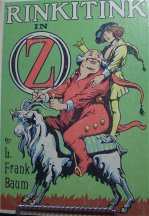 Rinkitink in
Oz is the tenth book in the Land of Oz series written by L. Frank Baum.
Published on June 20, 1916, with full-color and black-and-white illustrations
by artist John R. Neill, it is significant that no one from Oz appears
in the book until its climax; this is due to Baum having originally written
most of the book as an original fantasy novel over ten years earlier, in
1905. Most of the action takes place on three islands — Pingaree, Regos,
and Coregos — and within the Nome King's caverns. Since the original ruler
of the nomes, Roquat — who later re-named himself Ruggedo, was deposed
in 1914's Tik-Tok of Oz, Baum had to cleverly rework the tale to accommodate
his selfish but well-intentioned replacement, Kaliko.
Rinkitink in
Oz is the tenth book in the Land of Oz series written by L. Frank Baum.
Published on June 20, 1916, with full-color and black-and-white illustrations
by artist John R. Neill, it is significant that no one from Oz appears
in the book until its climax; this is due to Baum having originally written
most of the book as an original fantasy novel over ten years earlier, in
1905. Most of the action takes place on three islands — Pingaree, Regos,
and Coregos — and within the Nome King's caverns. Since the original ruler
of the nomes, Roquat — who later re-named himself Ruggedo, was deposed
in 1914's Tik-Tok of Oz, Baum had to cleverly rework the tale to accommodate
his selfish but well-intentioned replacement, Kaliko.
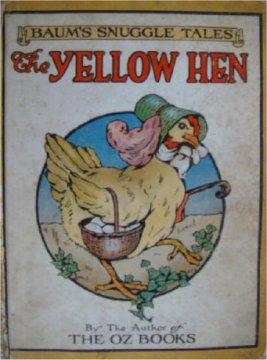 Record of Her
Adventures with Dorothy Gale of Kansas, the Yellow Hen, the Scarecrow,
the Tin
Record of Her
Adventures with Dorothy Gale of Kansas, the Yellow Hen, the Scarecrow,
the Tin
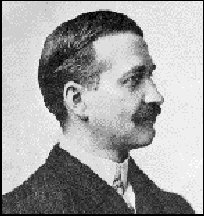
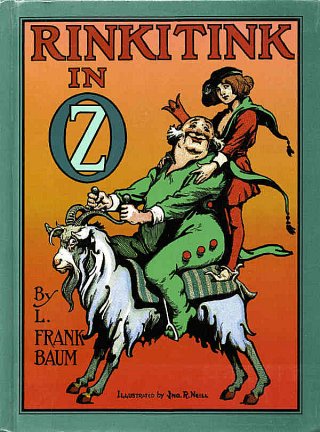
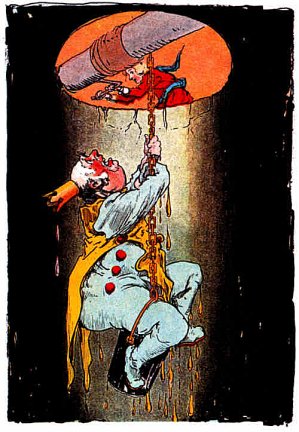
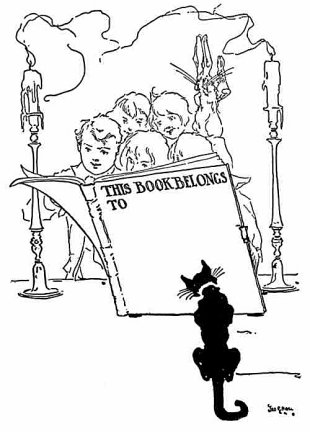
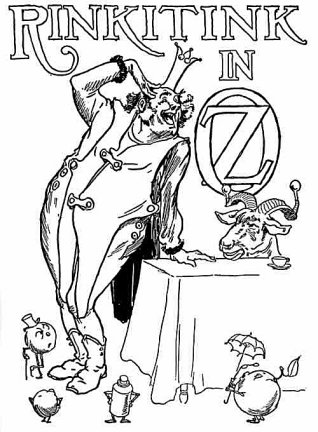
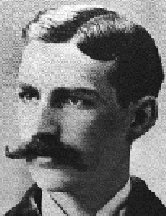 L(yman)
Frank Baum (1856-1919) American journalist and writer, whose best-known
book is The Wonderful Wizard of Oz (1900). Baum's stories about the imaginary
Land of Oz belong to the classics of fantasy literature. The Oz series
was long shunned by librarians, and neglected by scholars of children's
literature. Baum has often been compared to Lewis Carroll - they both had
a girl as the protagonist in their most famous works. Lyman Frank
Baum was born in Chittenango, New York. His father was the oil magnate
Benjamin Ward Baum and mother Cynthia (Stanton) Baum, a women's rights
activist. Baum grew up with his seven brothers and sisters on a large estate
just north of Syracuse. "The cool but sun-kissed mansion... was built in
a quaint yet pretty fashion, with many wings and gables and broad verandas
on every side," Baum later wrote in DOT AND TOT IN FAIRYLAND (1901). The
house, although it was large, did not have running water. Until the age
of twelve, Baum was privately tutored at home. In the late 1860s he spent
two years at Peekskill Military Academy, where he learned to loathe the
rigid discipline. In 1873 Baum became a reporter on the New York World.
L(yman)
Frank Baum (1856-1919) American journalist and writer, whose best-known
book is The Wonderful Wizard of Oz (1900). Baum's stories about the imaginary
Land of Oz belong to the classics of fantasy literature. The Oz series
was long shunned by librarians, and neglected by scholars of children's
literature. Baum has often been compared to Lewis Carroll - they both had
a girl as the protagonist in their most famous works. Lyman Frank
Baum was born in Chittenango, New York. His father was the oil magnate
Benjamin Ward Baum and mother Cynthia (Stanton) Baum, a women's rights
activist. Baum grew up with his seven brothers and sisters on a large estate
just north of Syracuse. "The cool but sun-kissed mansion... was built in
a quaint yet pretty fashion, with many wings and gables and broad verandas
on every side," Baum later wrote in DOT AND TOT IN FAIRYLAND (1901). The
house, although it was large, did not have running water. Until the age
of twelve, Baum was privately tutored at home. In the late 1860s he spent
two years at Peekskill Military Academy, where he learned to loathe the
rigid discipline. In 1873 Baum became a reporter on the New York World.
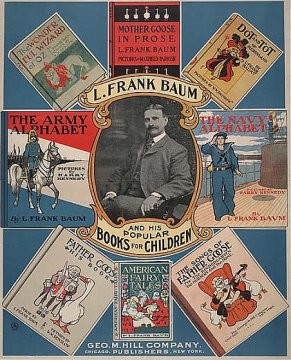 Two years later
he founded the New Era weekly in Pennsylvania. He was a poultry farmer
with B.W. Baum and Son and edited Poultry Record and wrote columns for
New York Farmer and Dairyman. Baum's father owned a string of theatres
and Baum left journalism to become an actor. In New York he acted as George
Brooks with May Roberts and the Sterling Comedy in plays which he had written.
He owned an opera house in 1882-83, and toured with his own repertory company.
In 1882 he married Maud Gage; they had four sons.Baum returned in 1883
to Syracuse to the family oil business and worked as a salesman in Baum's
Ever-Ready Castorine axle grease. His own endeavor was not successful -
Baum's Bazaar general store failed in South Dakota, and the family's fortunes
took a downturn. From1888 to 1890 he ran the Aberdeen Saturday Pioneer.
He moved to Chicago, and tried sales positions. In 1897 he founded
National Association of Window Trimmers and edited Show Window from 1897
to 1902. Baum made his debut as a novelist with Mother Goose in Prose (1897).
It was based on stories told to his own children. Its last chapter introduced
the farm-girl Dorothy. In the preface of the book Baum wrote that he wanted
to create modern fairy tales, and not scare children like the Brothers
Grimm did. "Modern education includes morality; therefore the modern child
seeks only entertainment in its wonder tales and gladly dispenses with
all disagreeable incident." Over the next 19 years Baum produced 62 books,
most of them for children. In 1899 appeared Father Goose: His Book, which
quickly became a best-seller. Baum's next work was The Wonderful
Wizard of Oz, a story of little Dorothy from Kansas who is transported
with dog Toto by a 'twister' to a magical realm. The book, which was illustrated
and decorated by W.W. Denslow, was published at Baum's own expense. The
book sold 90,000 copies in the first two years. Baum moved to California
and the rest of his life he produced sequels. Under the pen name
"Edith Van Dyne" he published 24 books for girls, and as "Floyd Akers"
he wrote six books for boys. As "Schuyler Staunton" he wrote the novels
THE FATE OF THE CLOWN (1905) and DAUGHTER OF DESTINY (1906).
Two years later
he founded the New Era weekly in Pennsylvania. He was a poultry farmer
with B.W. Baum and Son and edited Poultry Record and wrote columns for
New York Farmer and Dairyman. Baum's father owned a string of theatres
and Baum left journalism to become an actor. In New York he acted as George
Brooks with May Roberts and the Sterling Comedy in plays which he had written.
He owned an opera house in 1882-83, and toured with his own repertory company.
In 1882 he married Maud Gage; they had four sons.Baum returned in 1883
to Syracuse to the family oil business and worked as a salesman in Baum's
Ever-Ready Castorine axle grease. His own endeavor was not successful -
Baum's Bazaar general store failed in South Dakota, and the family's fortunes
took a downturn. From1888 to 1890 he ran the Aberdeen Saturday Pioneer.
He moved to Chicago, and tried sales positions. In 1897 he founded
National Association of Window Trimmers and edited Show Window from 1897
to 1902. Baum made his debut as a novelist with Mother Goose in Prose (1897).
It was based on stories told to his own children. Its last chapter introduced
the farm-girl Dorothy. In the preface of the book Baum wrote that he wanted
to create modern fairy tales, and not scare children like the Brothers
Grimm did. "Modern education includes morality; therefore the modern child
seeks only entertainment in its wonder tales and gladly dispenses with
all disagreeable incident." Over the next 19 years Baum produced 62 books,
most of them for children. In 1899 appeared Father Goose: His Book, which
quickly became a best-seller. Baum's next work was The Wonderful
Wizard of Oz, a story of little Dorothy from Kansas who is transported
with dog Toto by a 'twister' to a magical realm. The book, which was illustrated
and decorated by W.W. Denslow, was published at Baum's own expense. The
book sold 90,000 copies in the first two years. Baum moved to California
and the rest of his life he produced sequels. Under the pen name
"Edith Van Dyne" he published 24 books for girls, and as "Floyd Akers"
he wrote six books for boys. As "Schuyler Staunton" he wrote the novels
THE FATE OF THE CLOWN (1905) and DAUGHTER OF DESTINY (1906).
